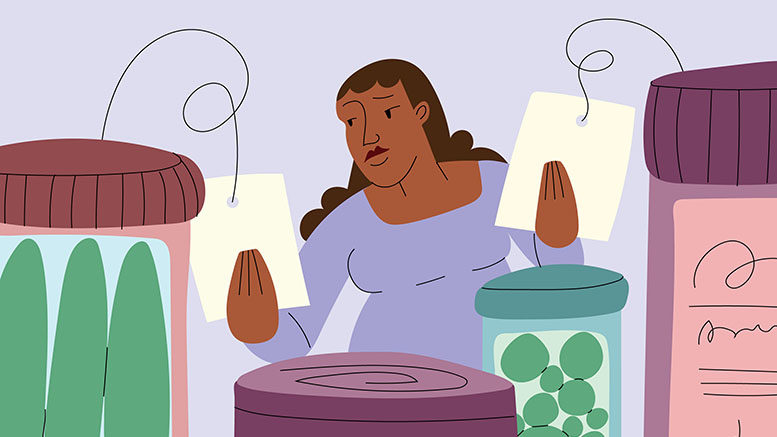Many community colleges now offer some type of program to help students who struggle with food insecurity, from opening simple food pantries on campuses to more sophisticated efforts, such as free breakfast and farmers markets. And a growing number are trying to address other more-complicated basic-need challenges, such as housing and transportation.
Yet the need continues to be greater than the available services, according to a new study from the Center for Community College Student Engagement (CCCSE) at the University of Texas, Austin. Less than half of students who need help with food are getting it from their college, it says.
For example, among 16% of surveyed students who indicated that they needed this kind of help, 44% of them said their colleges helped them get food over a 30-day period when they could not afford to buy it — but 56% said their college did not help.
The report also looks at survey responses based on race and ethnicity (see graph, below). Not surprisingly, a larger percentage of students of color reported facing these challenges. Among Black/African American and Hispanic/Latino students with food insecurity, a larger percentage said they didn’t get help from their college with their food insecurity than those who did (15% versus 12%, and 12% versus 10%, respectively).
CCCSE also examined students’ views on whether colleges offered help with housing, which has historically not been a focus for the mainly commuter institutions, though a growing number of two-year colleges over the past few years have started to offer housing. Among the 10% of students who indicated they need this kind of help, about one-fifth said they received help from their college; four of five said they did not.
CCCSE also looked at students’ utility expenses. Roughly one-fifth of 16% of students who said they needed help indicated their college assisted them with paying for utilities.
The report is based on a spring 2021 survey of 82,424 community college students from 194 U.S. institutions.
Consistent message from everyone
Some students may not know that their college offers support for basic needs, CCCSE says. It cites a recent Trellis Company survey that found 88% of participating colleges had at least one food pantry or food closet on campus, but only 38% of students knew about it, and 42% of the students who didn’t know were food insecure.
CCCSE notes the importance of relaying information about available services to students multiple times and from several sources, observing that students may not pay attention to the message until their own circumstances change.
“Many colleges are doing fabulous work in supporting their students, but more must be done to identify the students who require assistance, destigmatize the needs they have, and connect them to the services that can bolster them,” CCCSE Executive Director Linda Garcia said in a release.
Washington Watch: White House unveils national strategy on hunger, nutrition and health
The study also outlines what college employees — from presidents and trustees, to faculty and advisors — can do at their schools to help narrow the basic-needs gap. For example, presidents and senior leaders can designate a person or team to maintain a list of current services that help students meet their basic needs, making sure everyone on campus has access to the information so they can use it in their contacts with students. Top leaders also can ensure advisors’ caseloads allow for asking students about their basic needs and following up regularly.
“Make this work a priority for everyone at the college and make sure each person understands what their role can be, what resources they can direct students to, and the importance of encouraging students to use these resources,” the report says.
It adds that connecting students with such supports is critical to bring back students who stopped out during the pandemic, help students who stay in college despite the struggles and ensure that all students are positioned for success.
CCCSE provided examples of a range of efforts at community colleges to address these areas. Madisonville Community College in Kentucky has food banks on three campuses and a $40,000 fund for student emergencies. At Ozarks Technical Community College in Missouri, all students can get a free breakfast five days a week when classes are in session. In Ohio, Cuyahoga Community College is planning a new apartment complex that will provide housing for single students with minor children.
More engaged in school?
An interesting finding in the report is that students with less food and housing security are more engaged — which may seem counterintuitive as the argument is generally that those students are often distracted from their school work by trying to secure basic needs. But it could be that the students who persist despite the challenges are driven to attain their goals, the report says.
“It is possible that respondents with less housing and food security are the students who are most determined to stay in college and therefore the most engaged,” it says. “It also may be that these students who did not leave despite the pandemic and its attendant challenges, and being more engaged is what made it possible for them to stick with college.”
Even so, CCCSE notes additional help could result in even more persistence.
“Each student has their own reasons and their own strategies for persisting,” CCCSE’s Garcia said. “But for all of them, it is worth asking one question: How much more successful might they be if their basic needs were met?”
Related article: Listening to students, helping them persist

